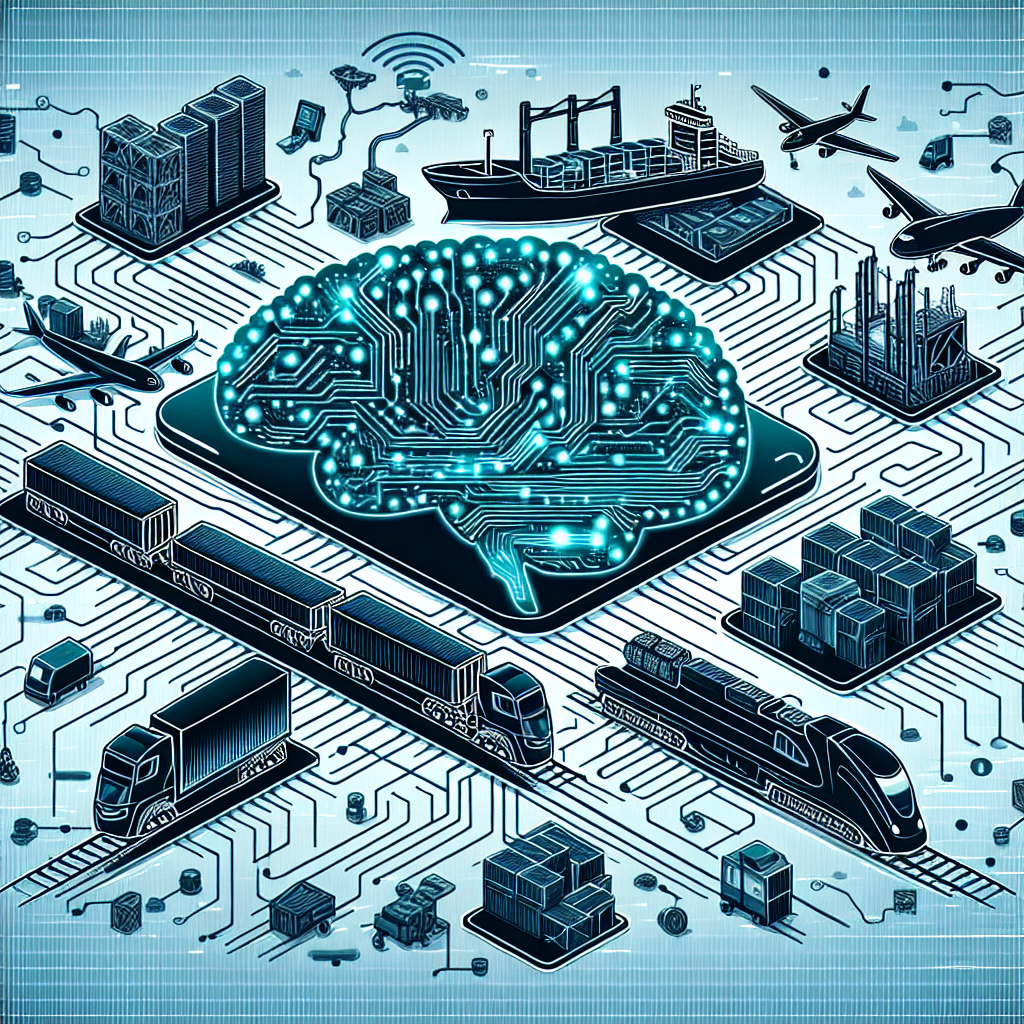Intermodal transportation networks play a crucial role in moving goods and people efficiently and cost-effectively across different modes of transportation, such as rail, road, air, and sea. In recent years, artificial intelligence (AI) has been increasingly integrated into these networks to enhance their operations and improve overall efficiency. AI technologies, such as machine learning, predictive analytics, and autonomous vehicles, are revolutionizing the way intermodal transportation networks are managed and operated.
One of the key advantages of AI in intermodal transportation networks is its ability to optimize routing and scheduling. AI algorithms can analyze vast amounts of data in real-time to determine the most efficient routes and schedules for transporting goods and people across different modes of transportation. This helps reduce transit times, minimize fuel consumption, and lower operating costs. AI can also predict and mitigate potential disruptions, such as traffic congestion or weather events, by proactively rerouting shipments to avoid delays.
Another important role of AI in intermodal transportation networks is in predictive maintenance. By analyzing data from sensors and monitoring systems on vehicles and infrastructure, AI can predict when maintenance is needed before equipment fails. This proactive approach helps prevent breakdowns and reduces downtime, ultimately improving the reliability and safety of transportation networks. AI can also optimize maintenance schedules to minimize disruptions to operations while maximizing equipment lifespan.
Furthermore, AI-powered autonomous vehicles are increasingly being used in intermodal transportation networks to improve efficiency and reduce costs. Autonomous trucks, drones, and ships can operate without human intervention, enabling round-the-clock transportation services and reducing labor costs. These vehicles can also communicate with each other and with infrastructure systems to optimize traffic flow and improve safety on the roads and waterways.
AI is also playing a significant role in enhancing the security of intermodal transportation networks. By analyzing data from surveillance cameras, sensors, and other sources, AI can detect and respond to security threats in real-time. For example, AI algorithms can identify suspicious behavior or unauthorized access to restricted areas and alert security personnel to take action. AI can also help prevent cyber attacks by monitoring network traffic and identifying potential vulnerabilities before they are exploited.
In addition to optimizing operations and improving security, AI is also revolutionizing the customer experience in intermodal transportation networks. AI-powered chatbots and virtual assistants can provide real-time updates on shipment statuses, answer customer inquiries, and assist with booking and scheduling transportation services. These AI technologies help streamline communication between transportation providers and customers, leading to higher levels of satisfaction and loyalty.
Overall, the role of AI in enhancing intermodal transportation networks is significant and far-reaching. By leveraging AI technologies, transportation providers can increase efficiency, reduce costs, improve safety, and enhance the overall customer experience. As AI continues to advance, we can expect to see even greater innovations in intermodal transportation networks, leading to a more connected and sustainable transportation system for the future.
FAQs:
Q: How is AI being used in intermodal transportation networks?
A: AI is being used in intermodal transportation networks to optimize routing and scheduling, predict maintenance needs, enable autonomous vehicles, enhance security, and improve the customer experience.
Q: What are the benefits of using AI in intermodal transportation networks?
A: The benefits of using AI in intermodal transportation networks include increased efficiency, reduced costs, improved safety, and enhanced customer satisfaction.
Q: What are some examples of AI technologies used in intermodal transportation networks?
A: Some examples of AI technologies used in intermodal transportation networks include machine learning algorithms, predictive analytics, autonomous vehicles, and virtual assistants.
Q: How can AI help improve the security of intermodal transportation networks?
A: AI can help improve the security of intermodal transportation networks by analyzing data from surveillance cameras, sensors, and other sources to detect and respond to security threats in real-time.
Q: What are some future trends in AI for intermodal transportation networks?
A: Some future trends in AI for intermodal transportation networks include the use of blockchain technology for secure transactions, the development of fully autonomous transportation systems, and the integration of AI with smart cities initiatives.

